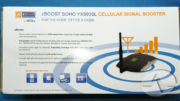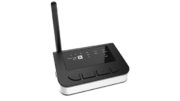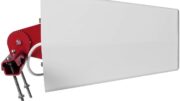For the most part, here in the 2020s, we just take it for granted that we’ll be able to make calls and use the internet on our phones. We tend to ignore the bar measurements and just try to use the phone. And you know what? That turns out to be the right answer. Why? Because you probably can’t get a good answer as to what your signal strength is anyway.
It’s not just about the bars.
Real techies measure cell phone signals in dBm, and ignore the cell phone bars. Why? Because as I said a few years ago, those bar measurements are pretty much meaningless. There’s a lot more to measure on a phone. You need to decide if you need the more precise RSRP measurement. And if you do, are you going to measure 4G signals or 5G ones?
Before I really get into the answer, let’s talk about the obvious fact – the most important measurement of signal strength is whether you can make calls and get internet. If you are able to hear the person on the other end, if they can hear you, and if you can surf and stream as fast as you want, then ignore the bars! And don’t bother trying to figure out the “real” measurements. All that’s important on your device is that you’re happy, and if your phone works like it should, you’ll be happy.
Taking a deeper dive.
If you do need to dig into those signal measurements though, the best way to start is to know what your “real” signal strength is. Signal strength is measured in dBm, which is a little hard to understand. It’s a logarithmic number expressing how much more or less than a milliwatt your signal is. If you don’t feel like the deep dive into technical territory, know that in almost every case dBm will be a negative number and therefore, the closer it is to zero, the stronger the signal.
It’s generally agreed that anything over -70dBm is very good, while anything over -90 is passable. Lower power levels than that will probably mean the possibility of lost calls or slow streaming. When that happens, you’ll probably want to consider a cellular signal booster.
Actually getting the information you need isn’t easy.
The real issue right now is actually getting that dBm number. Until recently it was possible to get that actual number quite easily whether you have an iPhone or Android. iPhones are notoriously hard to get real signal strength numbers from. Roughly every other minor OS update breaks this capability. So, if you want to see your signal strength and all you have is an iOS device, you’ll want to find a friend with an Android and get him or her to download a free app (I like Signal Strength myself). Make sure your friend uses the same cell carrier you do, so the numbers will apply to your phone.If you don’t have a friend with an Android, get yourself a prepaid phone… you don’t even have to activate it in most cases to install and use a free app.
Most free apps still won’t give you the whole picture because they’ll give you only one measurement that represents all the radios in your phone. You would need a professional quality signal meter in order to get a full and complete idea, but at least the free apps will give you some idea.
We’re just now beginning to see meters that will give you the most accurate measurement for 5G. They’re coming out at a fairly high price point, but it might be worth it if you do need those numbers. For regular folks, it’s often better to rely on what I said in the beginning of this article: Can you use the phone the way you want? If so, don’t worry.





